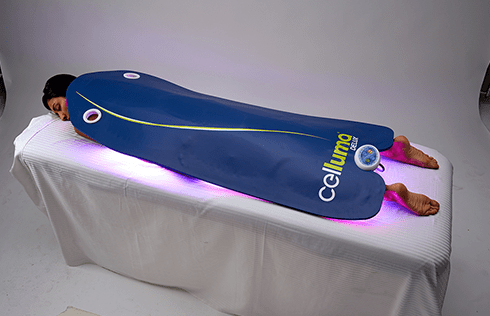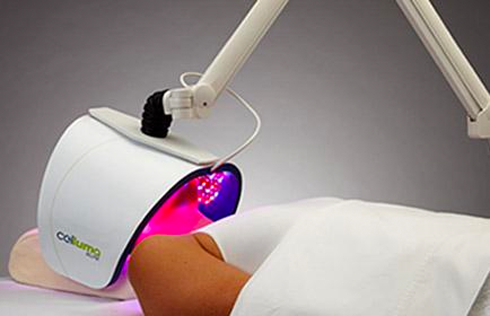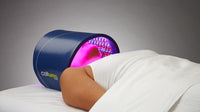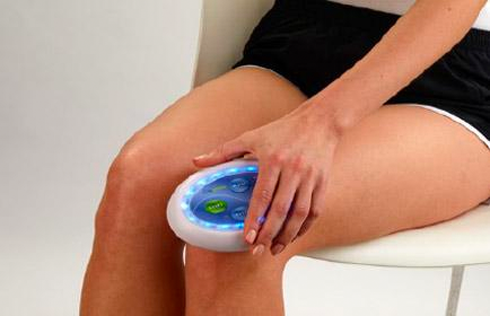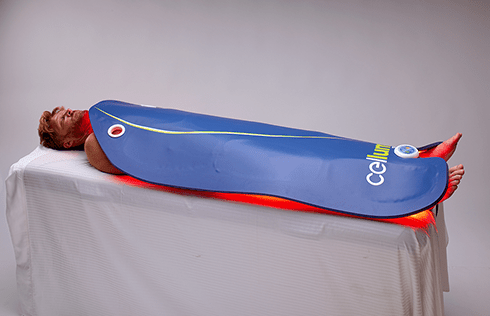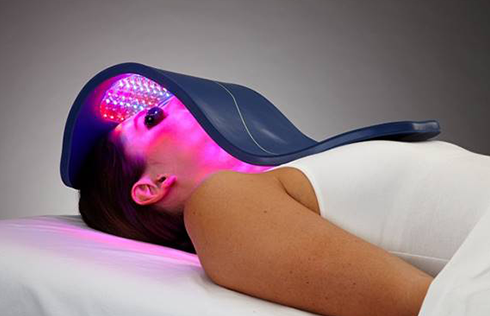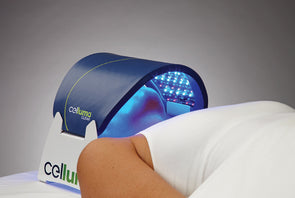LED LIGHT THERAPY
Transform Your Cellular Health with Celluma.
What is light therapy?
So what is LED light therapy? Light therapy is the application of specific wavelengths of light energy to tissue to obtain therapeutic benefits.
The energy delivered is then used to improve cellular performance. Light therapy can be delivered through light emitting diode (LEDs) devices or cold lasers, and has a variety of applications across many medical fields.
It has been widely researched and is supported by thousands of peer-reviewed and published clinical research papers from prestigious institutions around the world. Other terms by which light therapy is know are photobiostimulation, photobiomodulation, photomedicine, LED light therapy, low-level light therapy (LLLT), red light therapy, cold and soft LASER therapy. All terms are correct, have the same meaning and are used to describe the delivery of light energy to to treat a variety of medical and cosmetic conditions.
The treatment is non-invasive, painless, requires no recovery time, and can be used safely on all skin types.
The only all-in-one LED light therapy device designed to manage a variety of pain and skin conditions
In the same way that plants use chlorophyll to convert sunlight into energy, high intensity light emitting diodes (LEDs) utilizing specific, proven wavelengths of light can trigger a natural biostimulatory effect in human tissue. Research has shown that LED light therapy can increase circulation, accelerate tissue repair, kill acne bacteria, decrease inflammation, improve skin tone, texture and clarity, decrease under eye wrinkles as well as ease muscle and joint pain, stiffness, spasm, and pain associated with arthritis.
Research indicates that cells absorb particles of light (photons) and transform their energy into adenosine triphosphate (ATP), the form of energy that cells utilize. The resulting elevation of ATP is then used to power metabolic processes; synthesize DNA, RNA, proteins, enzymes, and other products needed to repair or regenerate cell components; foster mitosis or cell proliferation; and restore homeostasis. Simply put, the LED light source provides compromised cells with added energy so the cells performance is enhanced. For example, fibroblast cells will increase collagen and elastin production in connective tissue to improve the appearance of fine lines and wrinkles and increase the rate of wound healing.
..Reported mechanisms of light-induced effects include modulation of prostaglandin levels, alteration of somatosensory evoked potential and nerve conduction velocity, and hypermia of treated tissue. 1"
Reference:
About the Celluma SERIES
Cleared by the FDA for pain management and skin care, Celluma LED light therapy devices use specific wavelengths of light energy to improve cellular health by accelerating the repair and replenishment of compromised tissue cells. While similar devices on the market claim to do the same, they often require multiple panels and accessories in order to treat specific conditions or accommodate different parts of the body. From compact handhelds to large full-body light therapy devices, the Celluma SERIES offers convenient solutions in a variety of versatile, affordable all-in-one systems.

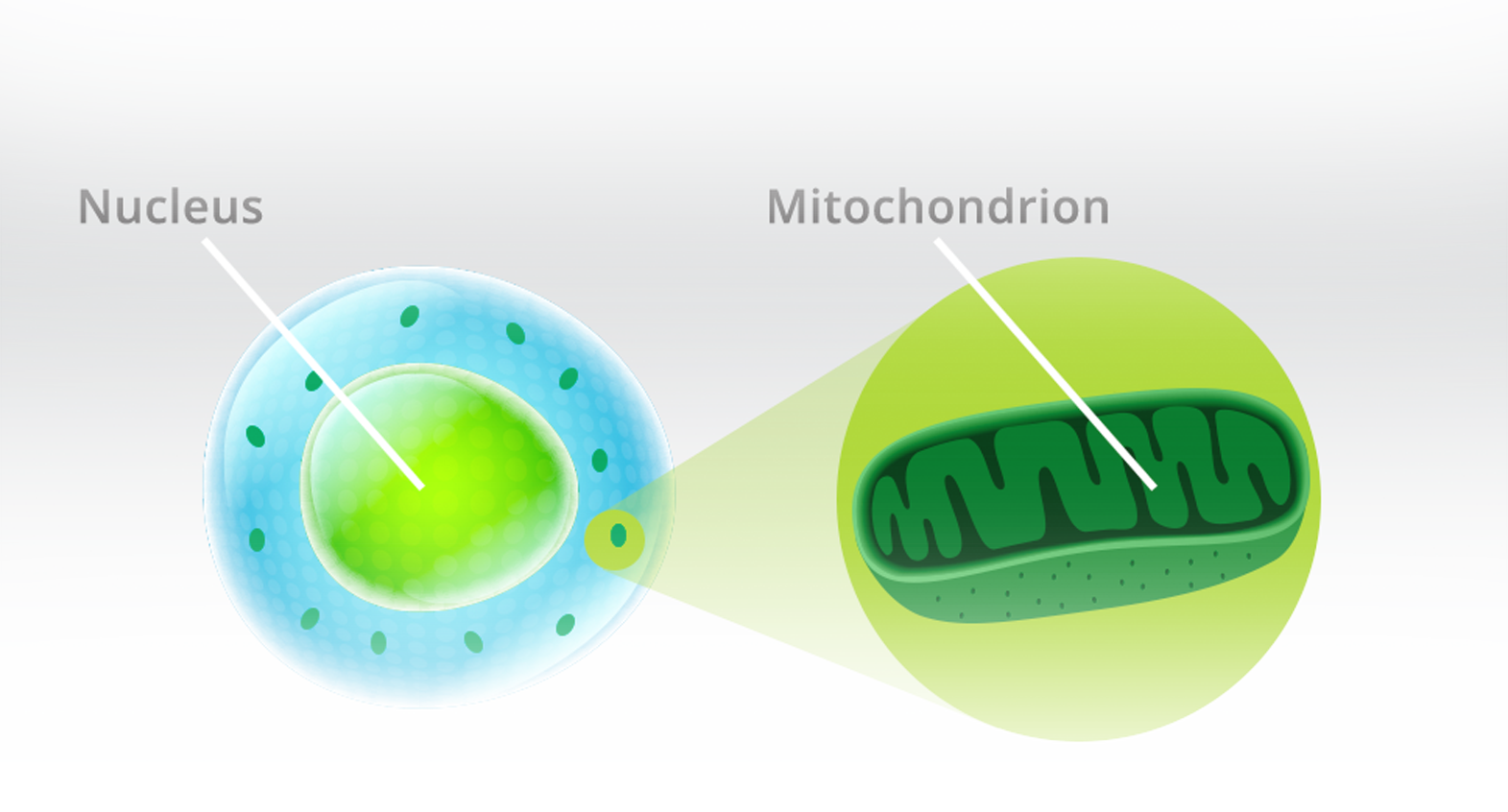
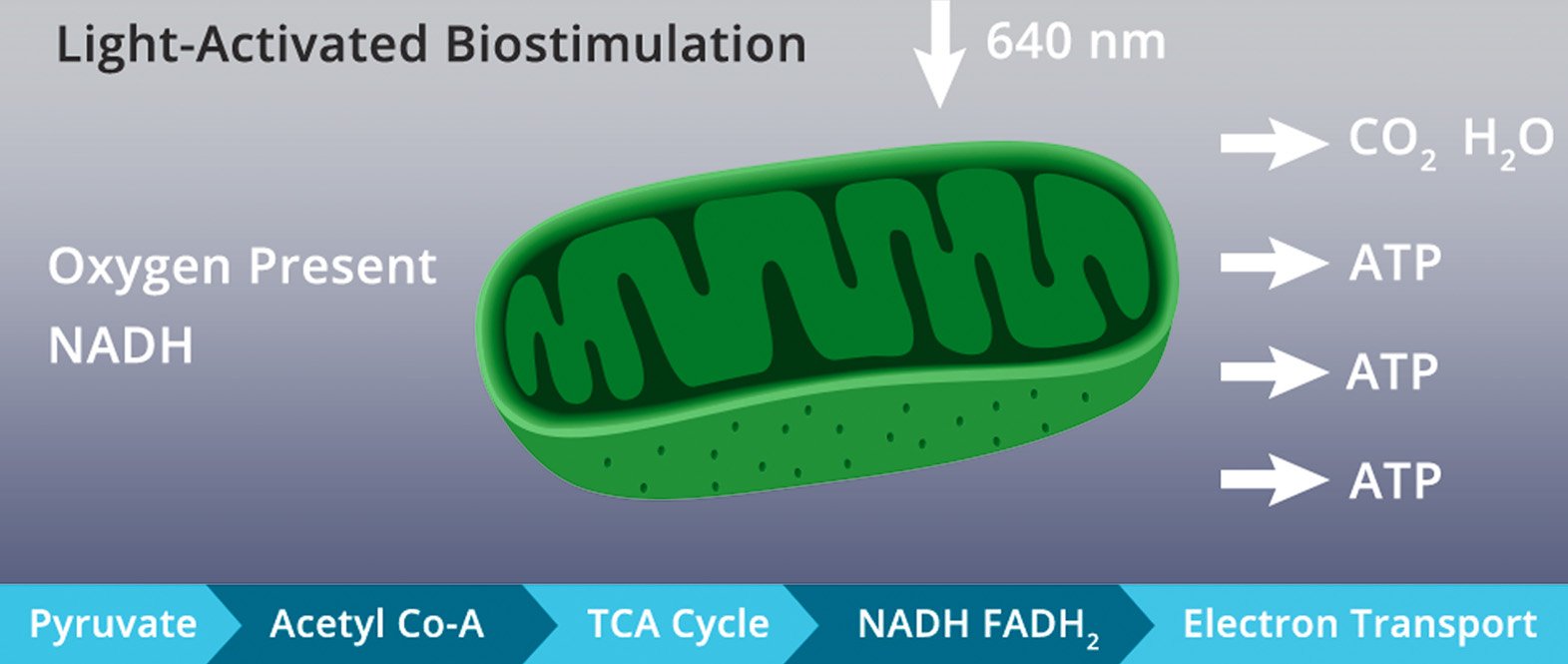
Celluma Versatility
Patented, pulsed-wave technology controlled by proprietary software algorithms add to the applicability of Celluma light therapy. With the exception of the Celluma CLEAR (emits blue and red only) for treating acne, all Celluma devices are polychromatic and deliver blue (465nm), red (640nm) and infrared (880nm) light energy simultaneously to safely treat a wide variety of conditions easily and affordably, both in a professional setting and at home. Each wavelength is absorbed by different molecules that act as a signaling mechanism for different cellular processes. For example, some reduce inflammation and some kill bacteria, while others enhance localized circulation.
Shining a Light on the Celluma Difference
There is a broad range of optical parameters required to induce cellular responses for desired therapeutic outcomes. These specific and well-proven requirements for effective light therapy begin with choosing the correct wavelengths; blue, red and near-infrared. These are the wavelengths most widely supported by credible scientific research for the effective application of low-level light therapy. Optimal energy delivery and treatment parameters are also crucial components. The importance of device placement and proximity to tissue is one aspect of LED light therapy which is often misunderstood and rarely explained effectively. The key to efficacy is getting the light emissions as close to the skin as possible to ensure optimal energy absorption. Based on Celluma’s patented shape-taking design, no other LED device is capable of positioning better or more easily than Celluma.
We know, based on the Inverse Square Law of optical physics, that the proximity to the treatment area is key to effectiveness. This law applies to all light therapy devices. In order to make up for the distance factor, early LED machines were built on what is considered today to be outdated platforms, and had to resort to different strategies, including increasing the number LEDs or increasing power output. However, these tactics don’t make up for distance they are positioned form the skin, they do however add dramatically to the cost of these bulky devices. The key to light therapy efficacy is not how much energy is output by a device, or how many LEDs there are, but how much energy is available for absorption by the tissue.

The Inverse Square Law states that certain forces on an object varies by the inverse square of the distance between the object and the source of the force. Light energy obeys this law. For example, an object placed three inches away from a light source will receive only one ninth as much energy as an object placed one inch from the light. Simply put and following the principles of the Inverse Square Law, we understand that the closer the light energy is emitted to the skin the more energy is absorbed and the faster and better you will see results. What exactly does this mean for you and how do you use this information to optimize results?
Today’s advances in LED technology allows Celluma to produce devices that leverage the Inverse Square Law. Celluma devices are flexible and shape-taking in design, allowing them to be contoured closely to the treatment area. In application, this means faster, better and longer lasting results for you, your clients and your patients. Essentially, placing Celluma, or any light therapy device farther away from the skin will not make it ineffective, just less effective.
Additionally, Celluma’s contouring design allows previously considered “awkward” areas such as elbows, shoulders or ankles to be treated with ease. The modality is hands-and stand free and does not require monitoring during the treatment session.
See how Celluma compares to other light therapy devices. The difference is uniquely clear. Celluma is:
- Safe, clinically proven, FDA cleared and medically CE marked
- Non-toxic, non-invasive
- Affordable alternative to drugs and harsh topical solutions
- Conforms closely to the treatment area for optimal effectiveness unlike other LED devices
- Patented Shape-Taking Design. While some LED machines claim to be flexible, unlike Celluma, none can hold their shape in position without stands or cradles to hold them in place
- Treats large surface areas and can be used safely anywhere on the body
- Portable and lightweight — ideal for travel and easy storage
- Takes the principles of the Inverse Square Law into account
- Embedded NASA researched technology
- Safe for the entire family, including pets*
Illuminating Vitality as Nature Intended
Celluma light therapy mimics a natural photobiochemical reaction process to deliver safe, UV-free low-level light energy through FDA cleared, high-intensity LED devices. Use Celluma to regain and maintain your body’s natural vitality without the concern of dangerous side effects often associated with modern pharmaceuticals. Designed to address a multitude of skin and musculoskeletal conditions, Celluma is available in 1, 2 and 3-mode user-friendly devices and comes in several sizes
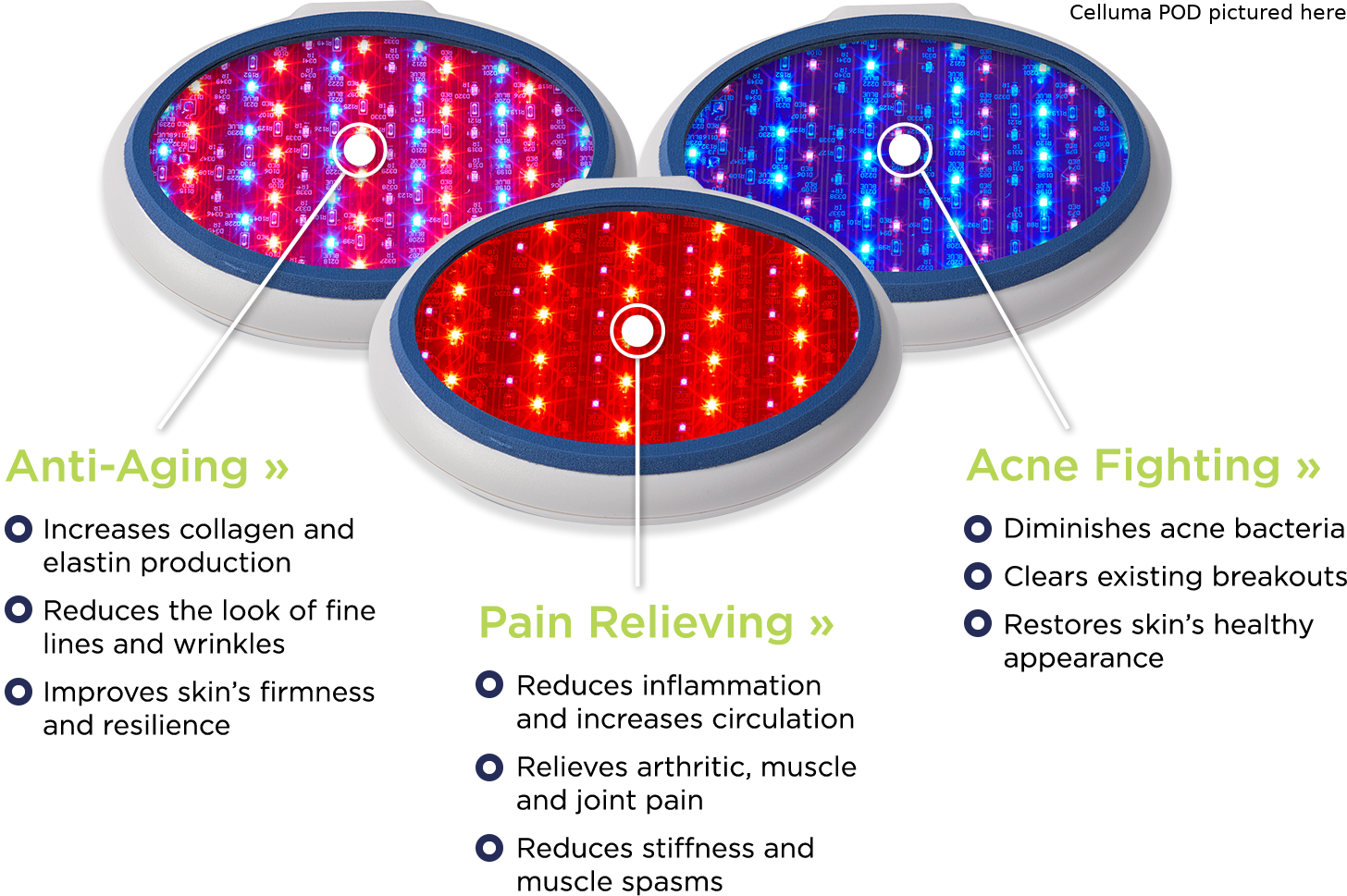
Depth of Light Energy Penetration
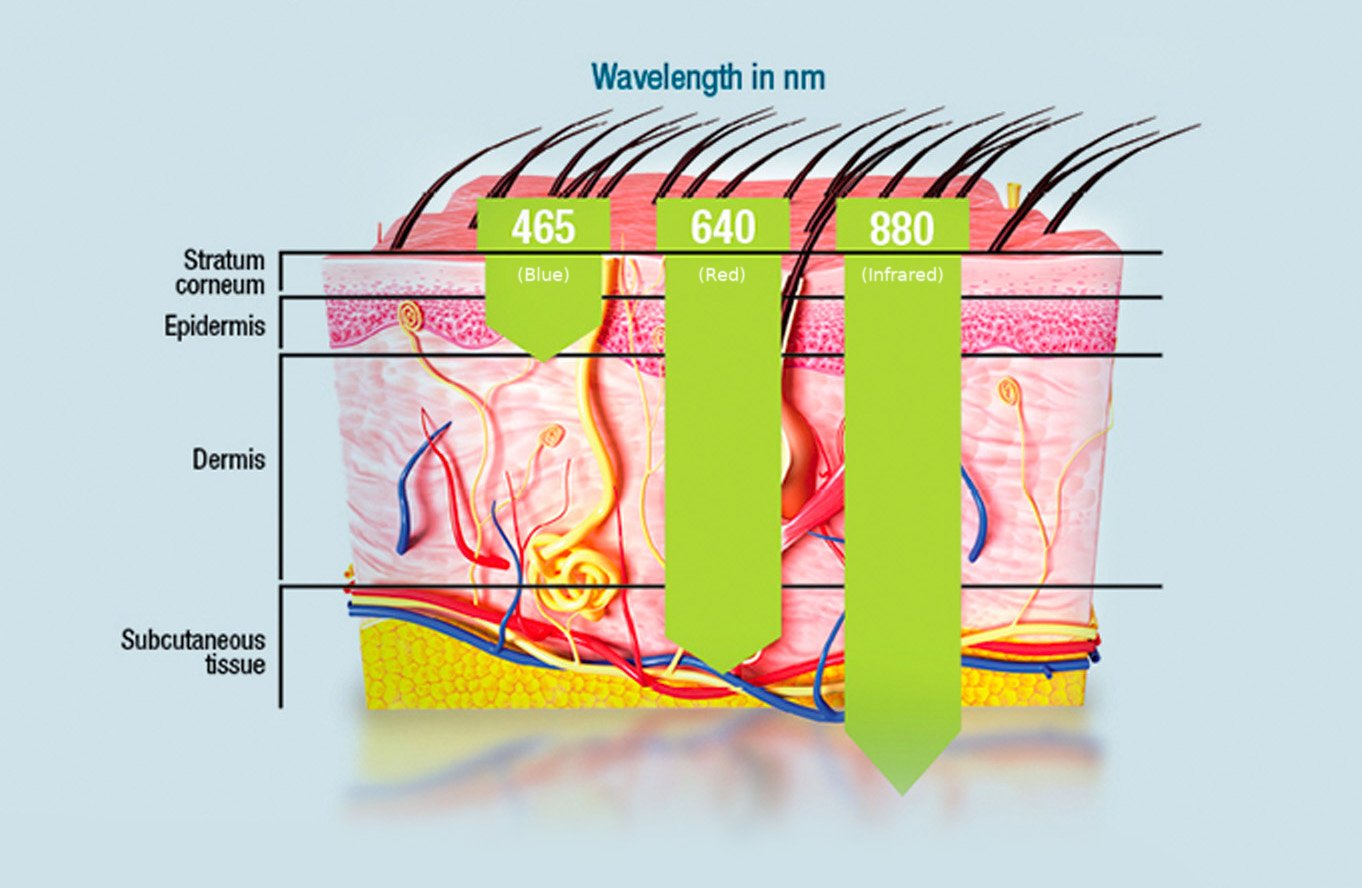
Electromagnetic Spectrum
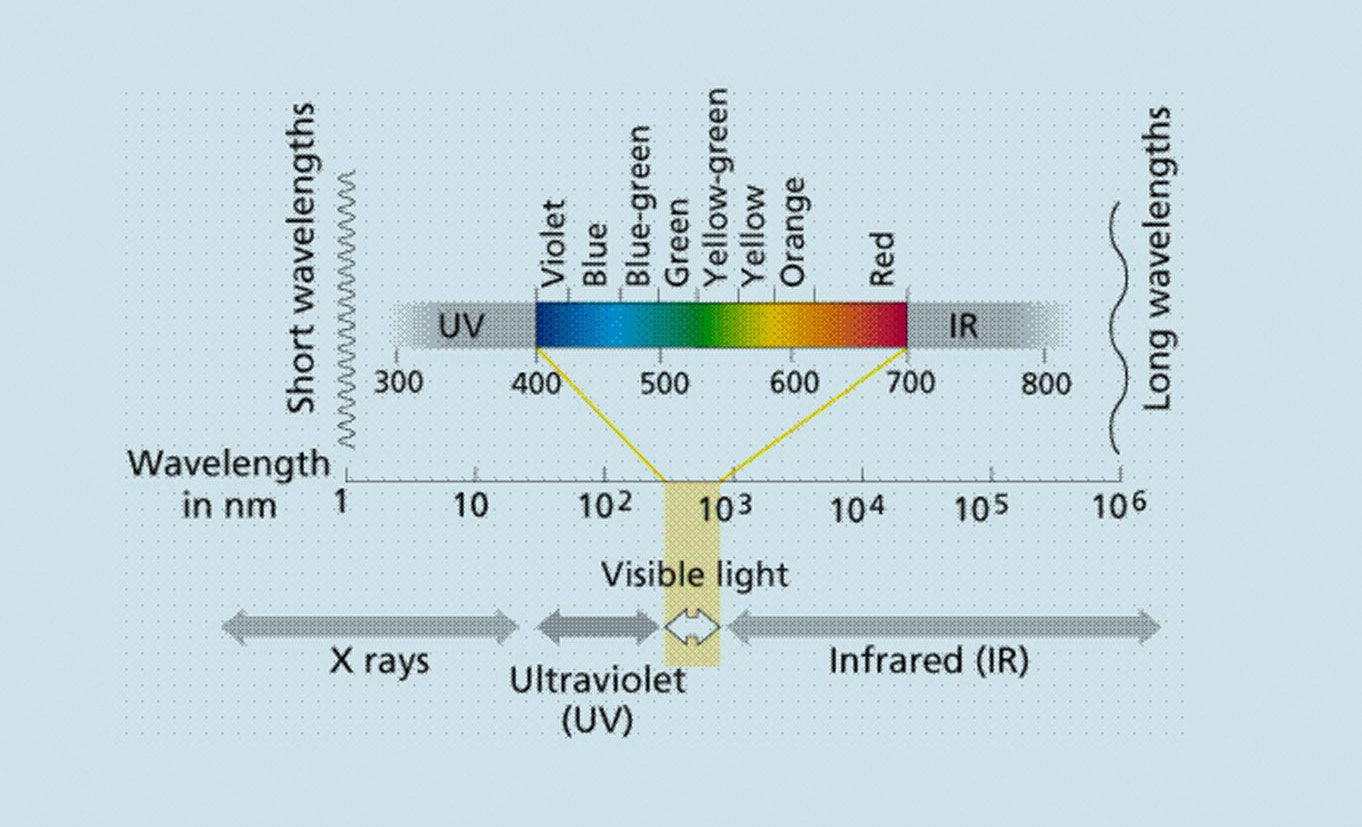
Originally developed by NASA for astronauts who could become injured or ill on long-term space missions, low-level-light therapy is used today as a safe and natural method of treating a variety of skin and pain conditions such as acne, wrinkles, aging skin and pain.
FAQsClinical Research
See why Celluma is a prefered low-level light therapy device for wellness, pain, and skin specialists.
FDA Cleared Versus FDA Approved?
Have you ever wondered about the difference between FDA Cleared versus FDA Approved? Read on for a full explanation. The FDA regulates all medical claims made by device manufacturers regarding their products. The Agency uses two different processes depending on comparative risk for reviewing medical claims before manufacturers are permitted to make those claims commercially.
The 510(k) Process
The 510 (k) process is intended to review devices that are better understood by the Agency and/or potentially less hazardous to patients, like the Celluma. This process is most often used to review Class II devices. This is a less burdensome review process and if the Agency concludes that the manufacture has demonstrated that the device is substantially equivalent to a legally marketed device, the device is “cleared” for commercialization. A device being “cleared” is not reflection on the efficacy of the device, only an indication of the comparative risk in use.
The Pre-Market Approval (PMA) process
The Pre-Market Approval (PMA) process is intended for devices not as well known to the Agency and that pose a greater risk to the patient, like implantable devices. An example would be a heart stint. These types of products are considered Class III devices. A PMA is a more burdensome process and if the Agency concludes that the manufacture’s claims are supported using this process, the device is “approved” for commercialization. As a particular Class III device becomes better known to the FDA, it may be re-classified as a Class II device, meaning any subsequent review of such devices by the Agency will be done using the 510(k) process. Again, a PMA “approval” does not denote the relative efficacy of a device, only the comparative risk of the device in use.
That said, a device “clearance” is not somehow a subordinated “rating” by the Agency in comparison to an “approval”. It is just the favorable conclusion of a different review processes used by the Agency, depending on how common and how risky the device is getting reviewed


